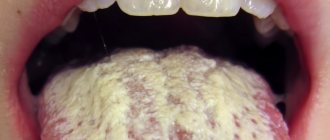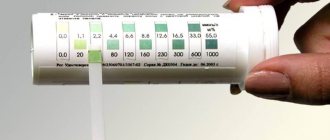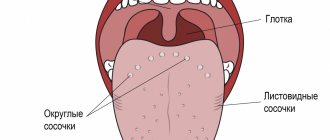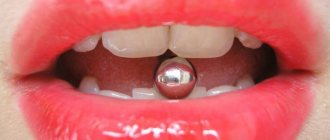- Published by: Laima Jansons
White plaque on the lips is a fairly common and unpleasant phenomenon, causing discomfort and certain aesthetic inconveniences. In some people it may appear only at certain times, in others it occurs all the time. In most cases, the temporary manifestation of the disease does not indicate the presence of serious pathologies and, when the cause is eliminated, goes away on its own.
Photo 1: In case of recurrence of white plaque on the lips, the patient needs to seriously think about visiting a doctor - this may be a signal of the onset of the development of serious diseases. Source: flickr (dr kryger).
Natural causes of plaque
In some cases, the phenomenon in question appears periodically and at different times of the day. In other situations, the problem is present on an ongoing basis. For example, a person may notice plaque in the morning after sleep, during which the saliva flowing from the mouth dries, forming a whitish crust. This condition passes through a certain period and should not cause alarm. But there are also dangerous pathologies that require immediate medical attention. We will list the most common provoking factors, and later in the material we will consider in more detail the main pathological causes.
- allergic reactions, which are caused, for example, by the use of toothpaste containing components that irritate the mucous membranes,
- vitamin deficiency associated with a lack of useful vitamins and microelements in the body - cracks appear in the corners of the lips, followed by a white coating,
- wearing uncomfortable or deformed orthopedic structures, which leads to injury to the mucous membrane and its drying out due, for example, to the inability to close the mouth normally,
- taking potent drugs, antibiotics, hormones and contraceptives, undergoing chemotherapy - all these factors can lead to changes in the composition of saliva and disruption of the protective functions of the oral mucosa,
- smoking and other bad habits - plaque in this case can be regarded as the first signal that it’s time to quit smoking and excessive alcohol consumption,
- dehydration of the body due to increased physical activity, as well as prolonged exposure to heat - dry mucous membranes lead to the appearance of small cracks around the lips and whitish discharge,
- problems with nasal breathing, due to which the mucous membrane often dries out, because you have to breathe through the mouth,
- prolonged depressive state - in such cases, the lower lip usually suffers mainly, on which, in addition to plaque, small pimples also appear. You need to reconsider your lifestyle, try to sleep at least 8 hours a day, or better yet, take a vacation from work and have a good rest, because the result of stress is not only plaque, but also other malfunctions in the internal systems of the body,
- poor nutrition, excessive consumption of salty, sweet, smoked, heavy and fatty foods, leading to problems such as dysbiosis, gastritis and other gastrointestinal disorders,
- systemic pathologies such as diabetes mellitus,
- viral and bacterial infections, which are most often caused by decreased immunity and poor oral hygiene.
If the plaque goes away after some time, then there is no need to worry
. It is worth noting that a light film may well be the result of using low-quality lipstick or gloss. Some cosmetic products add components that promote drying and peeling of the epithelium. To solve the problem, just stop using low-quality cosmetics.
Non-pathological causes
Various factors can provoke white plaque on the lips:
- insufficient oral care;
- an unbalanced diet when it does not provide the body with sufficient vitamins and minerals;
- wearing dentures;
- taking certain medications;
- depression;
- bad habits, in particular smoking.
To get rid of unwanted manifestations in such cases, it is enough to eliminate the provoking factor.
If the problem occurs only in the morning, most likely the white coating is dried saliva that flows out randomly during sleep. When such manifestations are observed occasionally, and the plaque itself does not have an unpleasant odor, there is no need to worry. The film will disappear after hygiene procedures.
More about the main pathological prerequisites
As for the pathological problems that lead to the appearance of the symptom in question, most often light discharge occurs due to viral infections, lack of vitamins and microelements, and disturbances in the gastrointestinal tract. Let's take a closer look at the most common reasons for the formation of white plaque on the lips.
Localization of plaque during candidiasis
This type of disease begins to develop against the background of excessive proliferation of opportunistic yeast-like fungi of the genus Candida, which live in every organism. People call this disease “thrush”. Patients with candidiasis often complain of the following symptoms:
- redness of the mucous membrane inside the mouth,
- a cheesy, white coating on the tongue and lips, as well as on the roof of the mouth,
- the appearance of blisters, painful ulcers that cause discomfort during eating and talking,
- sensation of itching and burning at the location of the wounds,
- fatigue, lack of appetite,
- In a newborn baby, plaque often causes an increase in body temperature.
The photo shows candidiasis
. Important! If left untreated, the film acquires a brownish or greenish tint. Therefore, it is better to contact a specialist immediately after discovering a suspicious symptom.
The disease occurs against the background of such negative factors as chronic problems with the gastrointestinal tract, metabolic disorders, diabetes, stress, depression, antibiotic therapy, pathologies of the endocrine system and a sharp decline in immune defense. It is also transmitted to healthy people through kisses, personal hygiene and household items.
Thrush often occurs in women in the first trimester of pregnancy. This symptom disappears on its own, but it is still better for the patient “in pregnancy” to consult a doctor. Candidiasis is also diagnosed during hormonal imbalances, menopause, and during puberty. In a child, sometimes spots are the result of trauma to the mucous membranes and the subsequent formation of pathogenic microflora (if he hits himself or bites his lips).
If left untreated, the film acquires a brownish or greenish tint.
For candidiasis, specialists prescribe treatment, which includes a comprehensive intake of antifungal agents, application of creams and ointments. During the entire course, patients are advised to rinse their mouths with appropriate solutions.
Changes in the oral mucosa due to dysbacteriosis
An imbalance of bacteria (or dysbiosis) in the human body, provoked by taking medications and poor-quality food, often causes the accumulation of deposits on the tongue, similar to cheesy lumps. Plaque is not always easy to clean off from the outer part of the mucous membranes and in some cases has a foamy consistency, which indicates the presence of fungal flora. Characteristics of plaque in dysbacteriosis:
- the thickness of the film does not allow you to see the color of the tongue,
- wet and greasy consistency
- white color (a yellowish tint indicates a more severe form of dysbiosis),
- It can be removed easily, but quickly appears again.
In case of dysbacteriosis, plaque is easily removed, but also quickly reappears.
After carrying out the necessary diagnostic examinations confirming the disease, it is necessary to clean the tongue with special oils and solutions, and also restore the intestinal microflora.
Plaque due to vitamin deficiency
This disease occurs as a result of prolonged malnutrition with a lack of any types of vitamins. The lack of these organic compounds causes a malfunction of the entire body and significantly affects the condition of the epithelium. Dry skin from dehydration cracks, a rash appears on it, and then a plaque forms. Additional symptoms of vitamin deficiency are dulling and falling hair, thin and peeling nail plates, involuntary and painful muscle contractions, bleeding gums, tooth sensitivity, joint pain, decreased visual acuity, weight and slow development of bone mass in the baby.
With autotaminosis, lips become dehydrated, dry and dull.
Depending on the severity of the disease, the doctor prescribes the patient a course of physiotherapeutic procedures, intramuscular injections or oral medication. If all recommendations are followed, clots on the lips of the mouth will disappear very quickly.
Symptoms of stomatitis
Inflammation of the mucous membranes of the mouth, called stomatitis, is characterized by unpleasant, painful sensations when eating or drinking, the appearance of small vesicular blastulas, a light white film and elevated body temperature. In the absence of proper treatment, the patient may develop round purulent ulcers with smooth outlines, the process of salivation will also increase, and the lymph nodes located near the jaw will increase. For the same reason, clots often form inside the lip.
The photo shows stomatitis on the oral mucosa
The infection spreads through contact, therefore, as soon as plaque appears in adults or children, you need to use separate utensils, and place the patient’s toothbrush away from the personal hygiene items of healthy people. This pathological condition is treated under the supervision of a doctor, since the treatment regimen consists of antiviral, painkillers and antibacterial agents.
Problems with lips in diabetes
The disease called diabetes is caused by a malfunction of the pancreas, which is responsible for the production of insulin. Without this hormone, sugar that is not converted into glucose accumulates in the blood, disrupts water metabolism, and fluid is excreted without remaining in the tissues. Therefore, people with diabetes complain of thirst, their skin dries out and peels, and the wounds on it take a long time to heal. Sometimes there is itching and films in the folds surrounding the mouth.
With diabetes, lips crack and do not heal for a long time.
On a note! It is worth noting that against the background of an imbalance in blood sugar, candidiasis, stomatitis and various dental diseases often develop. In this regard, diabetics need to periodically visit the dentist, maintain oral hygiene and monitor their diet.
Symptoms of cheilitis
Problem areas that appear in the corners of the lips often signal the onset of an inflammatory process in the mouth. It develops independently or is a symptom of another disease. Basically, cheilitis can be triggered by dermatosis that accompanies skin pathologies, allergies, or intensive growth of fungal bacteria provoked by taking antibiotics. Also, unbalanced nutrition (with a predominance of foods rich in carbohydrates) and lack of oral hygiene sometimes act as predisposing factors.
With cheilitis, problem areas appear in the corners of the lips
Cheilitis is characterized by dry cracks in the corners of the mouth, followed by the appearance of films on the upper and lower lips. Treatment consists of taking anti-inflammatory, antifungal ointments, antihistamines in combination with hormonal ones.
White film with herpes
One of the very first manifestations of the disease is burning, tingling on the lips and the formation of papules. Over time, the liquid in the transparent blisters becomes cloudy, they burst, turning into a weeping wound, and the damaged epithelium becomes covered with a film. Herpes causes discomfort in people, provokes the growth of lymph nodes and an increase in body temperature. The disease occurs due to a virus that can remain in the body for a long time and manifest itself with the onset of unfavorable conditions such as stress, hypothermia, colds, hormonal imbalance or lack of vitamins.
The photo shows herpes on the lips
Treatment should begin immediately - as soon as bubbles appear. Antiviral and immunomodulatory agents are prescribed as therapy.
Candidiasis: manifestations of infection and its danger
Separately, it is worth highlighting such an infectious disease as candidiasis. Fungi of the genus Candida are present in almost every organism. Under favorable conditions (decreased immunity, taking antibiotics, oncology, hormonal changes during pregnancy, menopause, etc.), they are activated and cause candidiasis of the oral mucosa. The disease most often affects infants and older people.
One of the main signs of the disease is a white, loose coating on the tongue and lips. It may also cover the inner surface of the cheeks, less commonly affecting the palate and gums. The plaque is easily scraped off, the tissue underneath turns red and sometimes bleeds. Other symptoms of candidiasis:
- unpleasant taste;
- dry mouth;
- burning sensation;
- formation of cracks on the lips and redness in the corners of the mouth;
- pain and difficulty swallowing;
- discomfort with normal tongue movements.
The disease can occur in acute and chronic form. The first of them is more common. The second can manifest itself in smokers, as well as in carriers of HIV infection. As each form of the disease progresses, other undesirable symptoms may appear.
If the acute form of candidiasis is not treated, it will become chronic. In this case, the patient feels severe discomfort. In places where plaque is localized, wounds appear that bleed and fester. Thrush quickly spreads to other parts of the mouth, making it difficult to chew food. The infection eventually affects the pharynx and tonsils. Then it descends into the lungs, gastrointestinal tract, liver and causes irreparable harm to them.
What does white plaque indicate - diagnostics
What does the formation of a whitish film mean? You can conduct preliminary diagnostics and identify the suspected cause of the problem by its location and main characteristics:
- cheilitis, herpes - clots form on the outside of the lips,
- candidiasis - accumulation on the inside of the lips in the form of a cheesy layer,
- problems of the gastrointestinal tract - clots look like a sticky film,
- vitamin deficiency, alcohol and nicotine addiction - a whitish coating collects in the corners of the mouth.
Accumulations under the lip also occur with fungal infections of the mucous membrane. If they cover the palate, tonsils, the inside of the cheeks and the tongue, then this is a severe form of infection. In men, this type of formation is most often the result of smoking.
What symptoms should cause alarm?
A small amount of whitish clots is often a consequence of the vital activity of organisms living in the mouth. If the formation of a film is not accompanied by discomfort or pain, and the film itself is easily cleaned off, then you don’t need to panic. But plaque should cause alarm if the following accompanying symptoms occur:
- unpleasant, putrid odor from the mouth,
- decreased functionality and mobility of the tongue,
- change in consistency and shade of plaque,
- restless sleep,
- loss of appetite,
- painful sensations in the throat, abdominal part.
An unpleasant accompanying symptom of the problem may be bad breath.
The listed signs can signal serious pathologies and require an immediate visit to the doctor. Based on the test results, he will identify the causes and determine treatment tactics.
Homeopathic treatment for white plaque on lips
Attention! Homeopathy remedies should be taken only when the characteristics of the medicine match the symptoms of the pathology to the maximum extent possible.
For the treatment of diseases accompanied by symptoms such as whitish plaque on the surface of the lips, the following homeopathic remedies are recommended:
- Borax – heals erosions due to stomatitis. Symptoms: excessive salivation, incorrect perception of taste, presence of bitterness in the mouth. It helps very well if stomatitis progresses inside the oral cavity;
- Kalium bichromicum - used in the presence of plaque on the lips, as well as in the oral cavity. The drug is especially effective against deep erosions on the inside of the lips and cheeks. The patient may feel dry mouth;
- Kalium muriaticum - quickly heals wounds with stomatitis, eliminates thrush in the mouth and on the lips. There may be foul breath, enlarged lymph nodes;
- Arsenicum - effective for small red canker sores that cause severe pain, which subsides after the patient drinks a warm drink;
- Antimonium crudum – prescribed for dry lips and milky plaque;
- Mercurius solubilis - prescribed for complicated forms of stomatitis, as well as for bleeding gums. The aphthae are large and saliva flows heavily.
To strengthen the immune system, complex homeopathic medicines such as Engystol, Galium-Heel, Edas-308, Echinacea compositum, Mucosa compositum are .
How to get rid of congestion on lips
To clear plaque, experts recommend acting in several directions at once - regularly treating the oral cavity, as well as eliminating the cause of the phenomenon. Standard measures include the following manipulations:
- normalization of diet, restoration of drinking regime,
- taking multivitamin complexes and immunomodulating drugs,
- antiviral and antifungal therapy,
- rinsing the mouth with decoctions of medicinal herbs and soda solution,
- regular cleaning of the mouth with soft brushes or treating problem areas with a cotton swab dipped in a special solution or essential oils that promote tissue healing.
“As soon as I notice the formation of a film on my lips in the morning, I immediately take proven measures to eliminate it - I make lotions from essential oils or treat problem areas with a cotton swab soaked in a decoction of medicinal herbs. Antiseptic rinses with ready-made medications or tinctures will also not be superfluous. It’s also good to lubricate your lips with oils in cold weather - they protect the skin from cracks and infection.”
Inna K., 43 years old, Belgorod
Measures to be taken
Pathology is treated only after an accurate diagnosis of the disease, so you must visit a therapist who will give a referral to the appropriate specialist.
At the appointment, the doctor will examine the patient, analyze his complaints, and take a smear from the oral mucosa or skin of the lips. If necessary, additional research will be prescribed (blood sampling, x-ray, gastrofibroscopy, etc.). The disease we are talking about today can be quickly neutralized exclusively with the help of complex therapy (special diets, antibiotic treatment, the use of traditional medicine, homeopathy).
Treatment with medications has 2 directions:
- mechanical removal of the film in the mouth and lips, prescribing medications that suppress the activity of the pathogen (Candida fungus);
- measures aimed at improving the functioning of the patient’s immune system.
Preventive measures
To avoid the formation of a whitish coating and characteristic clots on the lips, it is advisable to adhere to the following expert recommendations:
- timely treatment of gums and teeth,
- maintain proper oral care,
- create the right diet - reduce the amount of simple carbohydrates and sugar,
- maintain a drinking regime,
- reduce the consumption of alcohol and tobacco products to a minimum,
- strengthen the immune system, take vitamins A, B, E,
- use a hygienic balm that prevents the appearance of cracks on your lips.
It is important to observe the rules of personal hygiene to prevent the appearance of films in infants. You must remember to boil bottles, pacifiers and periodically wash all toys with soap.
As doctors note, plaque can signal the presence of various health problems, but before starting treatment, it is worth finding out why it formed. Only an accurate diagnosis of the disease will help speed up the recovery process and prevent complications.
Causes of pathology and ways to combat it
If you find a white film on your lips after waking up, you should not immediately panic. The reasons may be quite harmless: perhaps it is dried saliva that remains on the lips if a person breathes through the mouth while sleeping. This also happens to girls who use lipstick, which dries and rolls into small white lumps. In such situations, it is enough to lick your lips or simply wipe them with a damp cloth. The plaque will easily disappear and will not appear again.
If the plaque is a strong thick film that cannot be removed with a napkin, you should think about the following reasons for this problem:
- Lack or absence of vitamins in the body.
When a person does not receive the required amount of vitamins, adverse changes begin to occur in his body due to disruption of various systems. Hair falls out, nails split, skin peels, and an unpleasant coating appears on the lips, which is associated with the activity of pathogenic bacteria. In this case, the problem can be solved by taking complex vitamins and dietary supplements prescribed by the doctor. Plaque on lips - Digestive problems. Very often, problems with the gastrointestinal tract can manifest themselves in this way. Sometimes in such a situation, plaque appears not only on the lips, but also on the tongue and has a yellowish tint. It can be removed with a toothbrush, but the problem will not be completely solved. You need to seek help from a gastroenterologist who will prescribe a course of enzymes and a special diet.
- Psychological factors. Everyone reacts differently to stress: some get blotchy spots, some start to lose hair, and some have flaky skin. A film on the lips can also be a sign of psychological distress and anxiety. In such a situation, you need to let your body relax and rest.
- Smoking. When smoke and saliva interact, an environment is formed for the life of pathogenic bacteria, which is why a white film appears.
- Injury to the surface of the lips. This problem most often occurs in those who like to bite their lips. As a result, microtraumas in the form of cracks are formed. They easily become infected, microbes begin to multiply actively and fruitfully, and the products of their activity form a white film. It is necessary to use various healing balms and ointments for the lips.
- Dehydration. Due to lack of water in the body, the skin on the lips begins to dry out and subsequently peel off, forming white lumps that look like plaque. In this case, you need to increase your fluid intake and regularly treat your lips with a moisturizing balm.
Non-stenotic atherosclerosis of the arteries of the lower extremities in adulthood with complications
These problems require special attention from a specialist, but they are not as serious as real diseases of the oral cavity: candidiasis and stomatitis.









